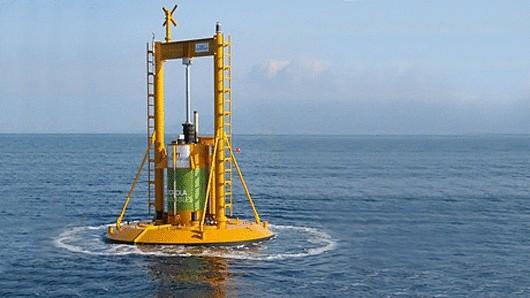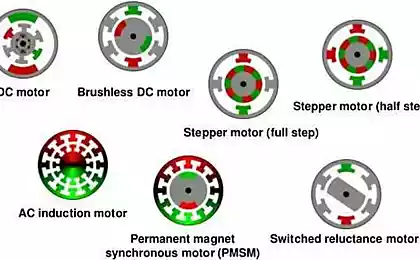658
The energy buoy, the PowerBuoy, wave power plant or
There are several potential technologies for producing energy from waves of seas and oceans. Among the used technologies are point absorbers (absorbers of vibrations), floating on the surface attenuators and installed at the bottom of a tidal turbine. Us firm Ocean Power Technologies (OPT) has developed energy buoy PowerBuoy, the energy Converter float type, and now deploys the construction of wave power plants in different parts of the world.
Recently it became known that technological know-how Ocean Power Technologies are supported by the inexhaustible production facilities of the industrial giant Lockheed Martin to build one of the largest wave power plant with a capacity of 19 megawatts off the southern coast of Australia in Portland, Victoria.

Technology energy buoys developed by ORT and tested in cooperation with the U.S. Navy off the coast of new Jersey on the research base of the U.S. Navy. In particular PowerBuoy is used there to power the radar and sea-based communication system.
Energy buoy is completely self-contained unit. It is attached the anchor to the bottom of the ocean and floating on the surface. Electricity is produced by converting the reciprocating system and a generator vertical displacement of the buoy on the waves. Ashore electricity is supplied by undersea cable.
A long-term agreement between the companies involves using ORT from Lockheed Martin to design and manufacture devices PowerBuoy, as well as support in marketing, technical support and overall management of the project.
Companies have already successfully collaborated previously on other projects wave energy, including the pilot project for the US Navy, and commercial wave power station in Coos Bay, Oregon, USA. It will involve a 200 buoy PowerBuoy, is able to collectively provide the total capacity to 100 MW, which will make the plant the largest in the world upon completion.
Project in the Australian state of Victoria will be partially funded by the Department of resources, energy and tourism, contributed the ORT grant 66.5 million AUD ($67.6 million)
The initial capacity will be 19 MW, for which it will be installed 45 energy buoy PowerBuoy and underwater substation five. It is expected that the generated wave energy power plant will be sufficient to meet the needs of about 10,000 households. In the future, possible extension of the project up to the power of 100 MW.
Source: /users/276
Recently it became known that technological know-how Ocean Power Technologies are supported by the inexhaustible production facilities of the industrial giant Lockheed Martin to build one of the largest wave power plant with a capacity of 19 megawatts off the southern coast of Australia in Portland, Victoria.

Technology energy buoys developed by ORT and tested in cooperation with the U.S. Navy off the coast of new Jersey on the research base of the U.S. Navy. In particular PowerBuoy is used there to power the radar and sea-based communication system.
Energy buoy is completely self-contained unit. It is attached the anchor to the bottom of the ocean and floating on the surface. Electricity is produced by converting the reciprocating system and a generator vertical displacement of the buoy on the waves. Ashore electricity is supplied by undersea cable.
A long-term agreement between the companies involves using ORT from Lockheed Martin to design and manufacture devices PowerBuoy, as well as support in marketing, technical support and overall management of the project.
Companies have already successfully collaborated previously on other projects wave energy, including the pilot project for the US Navy, and commercial wave power station in Coos Bay, Oregon, USA. It will involve a 200 buoy PowerBuoy, is able to collectively provide the total capacity to 100 MW, which will make the plant the largest in the world upon completion.
Project in the Australian state of Victoria will be partially funded by the Department of resources, energy and tourism, contributed the ORT grant 66.5 million AUD ($67.6 million)
The initial capacity will be 19 MW, for which it will be installed 45 energy buoy PowerBuoy and underwater substation five. It is expected that the generated wave energy power plant will be sufficient to meet the needs of about 10,000 households. In the future, possible extension of the project up to the power of 100 MW.
Source: /users/276























